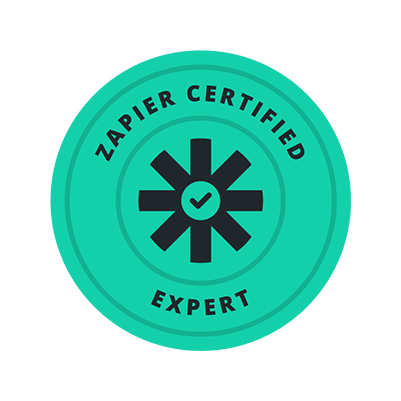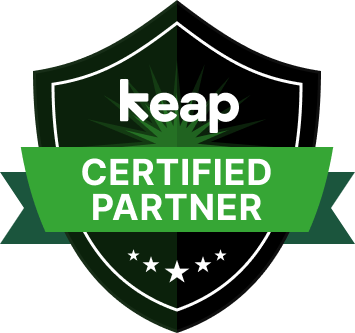AI Resume Parsing: 15+ Frequently Asked Questions Answered for Modern Recruiters
AI resume parsing is no longer just a “nice-to-have” feature—it’s a strategic necessity in today’s fast-paced recruiting environment. As talent teams handle hundreds or thousands of resumes each month, automation powered by artificial intelligence is changing how recruiters extract, interpret, and act on resume data. Yet with innovation comes uncertainty. How does it work? Is it accurate? What about compliance and bias? This FAQ blog post dives into the most common questions recruiters have about AI-powered resume parsing—demystifying the tech and helping teams make smarter, faster, and fairer hiring decisions.
Frequently Asked Questions
What is AI resume parsing?
AI resume parsing refers to the process of using artificial intelligence technologies—especially Natural Language Processing (NLP) and Machine Learning (ML)—to analyze and convert unstructured resume content into structured, searchable data. Unlike traditional parsing, which relies heavily on keyword matching, AI-based parsing understands context and meaning. It can infer implied skills, recognize role hierarchies, and identify relationships between entities like companies, job titles, and dates. This transformation helps recruiters automate data entry, improve search functionality, and reduce time-to-hire while preserving the quality of applicant insights.
How does AI parsing differ from traditional keyword-based parsing?
Traditional resume parsing typically relies on rigid keyword matching and rule-based logic, which makes it fragile when resumes are formatted unusually or contain non-standard language. AI parsing, on the other hand, leverages NLP to understand the meaning of phrases and their context. This allows the system to identify transferable skills, differentiate between seniority levels, and detect nuances like implied competencies. As a result, AI parsing delivers a more complete and accurate picture of a candidate’s profile, even when they use creative language or unconventional formatting.
Can AI resume parsing integrate with my existing ATS?
Yes. Most commercial-grade AI resume parsers are designed to integrate directly with modern Applicant Tracking Systems (ATS) via API. This integration ensures that parsed resume data is automatically injected into candidate profiles without manual data entry. Seamless integration supports real-time data transfer, structured field population (e.g., skills, experience, education), and enables downstream automation like candidate scoring and pipeline management. Before integrating, it’s essential to verify that your ATS supports such external API connections and allows sufficient customization for parsing workflows.
How accurate is AI-powered resume parsing?
AI-powered resume parsers have achieved very high accuracy rates—often over 90%—when extracting structured fields such as contact information, job titles, and dates. Their strength lies in semantic interpretation, which enables them to understand what a resume actually means rather than just what it says. Accuracy improves as systems are trained on diverse data sources. However, no parser is perfect. The best results come from a hybrid workflow that pairs AI parsing with recruiter oversight to validate and enrich the extracted data when necessary.
Is AI resume parsing compliant with data privacy laws like GDPR and CCPA?
Yes, if implemented responsibly. Reputable AI parsing solutions are built with compliance in mind. This includes secure data processing, data minimization, encryption, and support for subject access and deletion requests. Companies using resume parsers must ensure candidates are informed about data usage and must have mechanisms to fulfill data rights under laws such as GDPR (EU) and CCPA (California). Always work with vendors who provide documentation and auditability of their data practices, especially if you operate in regulated jurisdictions.
Can AI resume parsers reduce bias in hiring?
AI resume parsing can help reduce certain types of bias in the early stages of hiring by standardizing data and focusing solely on skills and experience. For example, it can ignore formatting, personal identifiers, or educational pedigree that may lead to unconscious bias. However, if the AI was trained on biased data, it can replicate those biases. This makes it crucial to audit parsing outputs regularly, ensure diverse training datasets, and always maintain human oversight in the decision-making process.
How does AI parsing handle skills extraction?
Skills extraction is one of the core strengths of AI-powered resume parsers. These systems use NLP to identify both explicit and implicit skills. For instance, if a candidate mentions leading “scrum meetings,” the parser may infer skills like “Agile methodology” or “Scrum Master” even if not directly listed. Additionally, the AI can map these extracted skills to a predefined taxonomy—whether custom or industry-standard—making them searchable, comparable, and easier to align with job requirements in your ATS or CRM.
Can resume parsers understand job title variations and synonyms?
Yes. One of the advantages of AI parsing is its ability to understand and normalize job titles and synonyms. It knows that “Software Engineer,” “Developer,” and “Programmer” may refer to similar roles depending on context. This helps prevent mismatches in candidate-job alignment and improves semantic search results. Advanced parsers use job title libraries and context-aware modeling to reduce errors in classification and increase consistency across your candidate database.
How do AI parsers handle employment gaps?
AI parsers analyze date ranges and chronology to detect employment gaps. They don’t interpret the reason for the gap but will typically flag missing timeframes or identify when a resume jumps from 2019 to 2022 without explanation. Recruiters can use this parsed timeline to prompt further discussion during screening or interviews. Some parsers also allow custom flagging or notes to be attached to parsed resumes for follow-up analysis or documentation within your ATS.
Do AI resume parsers work with resumes in different formats?
Yes. AI resume parsers are generally designed to handle a wide variety of document types including PDF, DOC, DOCX, RTF, and plain text. They also accommodate different resume styles—from traditional chronological to modern infographic layouts—though clean, text-based formats yield the best parsing results. For highly stylized or image-heavy resumes, parsing accuracy may drop, so it’s often recommended to provide candidates with formatting guidelines during application to ensure optimal data extraction.
How is parsed data used to score candidates?
Once resume data is parsed and structured, it can be compared to job criteria using scoring algorithms. These systems evaluate factors such as required vs. preferred skills, years of experience, education level, and career trajectory. Some platforms use AI-based predictive models that assess a candidate’s likelihood to succeed or stay in the role. Candidate scores help prioritize outreach, reduce recruiter workload, and improve quality-of-hire when used as one input alongside interviews and human judgment.
Can parsed resume data help with internal mobility?
Absolutely. Parsed data can be applied not just to external hiring but also to internal mobility efforts. By parsing internal employees’ resumes or performance records, companies can identify candidates for promotions, lateral moves, or reskilling initiatives. This creates a more dynamic, skill-driven workforce and reduces the need to source externally. Resume parsing also helps maintain accurate, up-to-date internal profiles in talent databases or HRIS systems, ensuring HR teams can act on real-time data when planning succession or reorganization.
Can resume parsers identify certifications and licenses?
Yes. Most advanced parsers are trained to recognize certifications and professional licenses using Named Entity Recognition (NER) techniques. Whether it’s \”PMP\”, \”CPA\”, \”Google Analytics Certified\”, or \”AWS Solutions Architect\”, a well-trained parser can tag these as relevant credentials. Additionally, some platforms cross-reference certifications with industry taxonomies to rank relevance or expiry status. For regulated industries, this capability helps recruiters verify compliance requirements during the pre-screening stage.
How should I evaluate AI resume parsing vendors?
When evaluating parsing vendors, consider several factors: parsing accuracy, language support, skill taxonomy compatibility, ease of integration, data security, compliance certifications, transparency of AI decisions (Explainable AI), and support for customization. Request a demo and test their parser on real resumes from your pipeline. Look for vendors who offer retraining, ongoing updates, and documentation. A parsing solution that fits seamlessly into your workflow while delivering consistent, high-quality data is worth the investment.
How can I monitor and maintain parsing performance?
Regularly monitor key performance indicators like parsing accuracy, field error rates, and recruiter feedback on parsed output. Establish a feedback loop between your team and the parsing system—especially for correcting extraction errors. Some platforms allow recruiters to flag mistakes that are then used to retrain the parser. Set up quarterly audits using anonymized data samples to detect drift, bias, or accuracy issues. Maintenance is not just technical—it’s strategic, ensuring parsing evolves with your job market and hiring needs.





